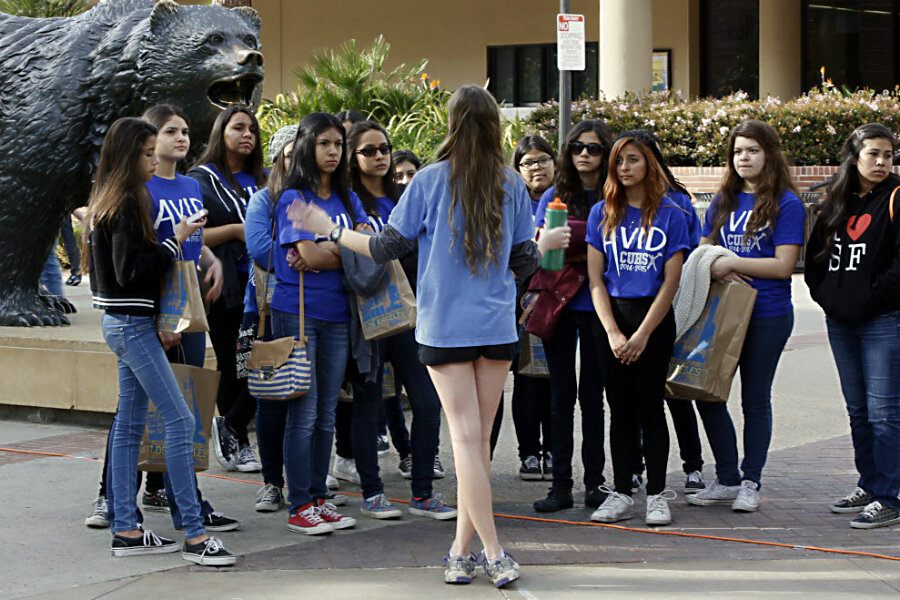How a high school senior responded to a rejection letter from Duke
High school seniors across America are collectively holding their breath until they receive that one life-changing letter in the mail from their desired college that puts them on the track to adulthood.
For some, the coming weeks will be filled with joy upon receiving admittance to the the school(s) of their choice. For others, this time will be spent reevaluating every decision they made in their life that led to them to receive numerous rejection letters. Regardless of where seniors fall on this spectrum, the stress put upon students is enormous.
For Siobhan O'Dell, 17, of North Carolina, her choice school was Duke University. Unfortunately for Ms. O'Dell, she was not accepted for the incoming freshman class. However, it is her reaction to receiving the university's rejection letter that has thrust her into the national spotlight.
O'Dell didn't make a fuss or throw a tantrum. She sat down and calmly wrote back to the school:
Thank you for the rejection letter of March 26, 2015. After careful consideration, I regret to inform you that I am unable to accept your refusal to offer me admission into the Fall 2015 freshman class at Duke.
This year I have been fortunate enough to receive rejection letters from the best and brightest universities in the country. With a pool of letters so diverse and accomplished I was unable to accept reject letters I would have been able to only several years ago.
Therefore I will be attending Duke University's 2015 freshmen class. I look forward to seeing you then."
(O'Dell's full letter as it appeared on Tumblr is here. "Seventeen" magazine originally picked up the story.)
The letter is intended to be humorous, turning the impersonal nature of university correspondence with prospective students and then reversed the message to target Duke's student admissions department. It was an effective parody of what the author in a HelloGiggles.com blog referred to as "Admissions Speak."
“I just realized how much power these universities have over the lives of students, and what they have to say is pretty much the end all,” O’Dell told the Duke [University] Chronicle. “So I thought, ‘what if it wasn’t? What if students had the final decision?’”
This year, Duke accepted 2,650 students out of 28,000 applicants out of the regular decision pool, good for an acceptance rate of 9.4 percent, according to the Duke Chronicle. This made it the third time in the school's history the acceptance rate reached single digits, according to the report. The university wrote back to O'Dell with the following, “I understand how disappointed you are that we were unable to offer you a space in our incoming class,” the note read. “I want to be honest with you and let you know that it’s very rare that we learn something that leads us to change our decision."
The letter went onto say that out of the last 500 rejected applications, going back a decade, that had asked to be reviewed for a second look, only in four instances did the university change its mind, according to the response O'Dell received.
Cristoph Guttentag, Duke's dean of undergraduate admissions, had no comment on O'Dell's application when he was contacted by ABC News. O'Dell is not dwelling on getting snubbed by Duke because she recently posted on her Instagram account that she was accepted by the University of South Carolina. She wants to study biology and minor in mathematics there and hopes to become a pediatrician or pediatric oncologist one day, according to the Duke student paper.
The idea of writing tongue-and-cheek college admission essays is not new. Many in college circles are familiar with a now-infamous college essay from a New York University applicant from years ago that makes outlandish claims like the author making 30-minute brownies in 20 minutes and the ability to throw tennis rackets at small objects with "deadly" precision, among a litany of other claims. The piece was written by Hugh Gallagher, who was accepted to NYU and graduated in 1994, though it wasn't his actual application essay. He used the piece to apply to writing programs in college. Gallagher's essay was one of the most virally forwarded emails in the early days of the internet, according to an article on About.com.
However, O'Dell's such outward rejection of rejection just may have landed her letter in a class of its own. She thought after sending the note to Duke admissions that would be the end of the saga, but it was not to be.
“My dad saw it on Facebook [on Wednesday] and texted me, ‘I see you’re trending today,’” O’Dell said.
Editors Note: O'Dell's rejection of Duke's rejection echoes a similar letter that appeared in the New York Times in 1981, titled "Make Rejection Work for You" by Paul Devlin. The Monitor can confirm that his letter appeared in a New York Times' opinion piece on May 31,1981, but the letter is not featured on the Times' online archive because the newspaper's "Times Machine" includes articles only appearing before Dec. 31, 1980. In the letter Mr. Devlin's wording was reflected similarly in O'Dell's letter, as Mr. Devlin's letter begins:
"Having reviewed the many rejection letters I have received in the last few weeks, it is with great regret that I must inform you I am unable to accept your rejection at this time.
This year, after applying to a great many colleges and universities, I received an especially fine crop of rejection letters. Unfortunately, the number of rejections that I can accept is limited."






